
Overlanding Colorado: Exploring the Hidden Gem of San Isabel National Forest, Adobe Peak & Holt Mountain
Share
Overlanding Colorado: Exploring the Hidden Gem of San Isabel National Forest, Adobe Peak & Holt Mountain
As an avid overlander and outdoor enthusiast, few experiences rival the thrill of exploring Colorado’s hidden gems. One such place is the San Isabel National Forest, an expansive wilderness area that offers a perfect blend of rugged trails, tranquil campsites, and stunning mountain vistas. In this article, I’ll take you on a detailed journey through my memorable four-day overland adventure in this incredible part of Colorado, highlighting the trails of Adobe Peak, Holt Mountain, and Locke Mountain. Whether you’re planning your next overlanding trip or just love discovering new off-the-beaten-path destinations, this guide will provide valuable insights and inspiration for your own explorations.
Overlanding Colorado in San Isabel National Forest is a rewarding experience that combines the challenges of trail driving with the serenity of nature. I embarked on this adventure in my Jeep Gladiator, Django, during Memorial Day weekend—a time when the forest is alive with spring’s freshness yet still quiet enough to feel like your own private wilderness.
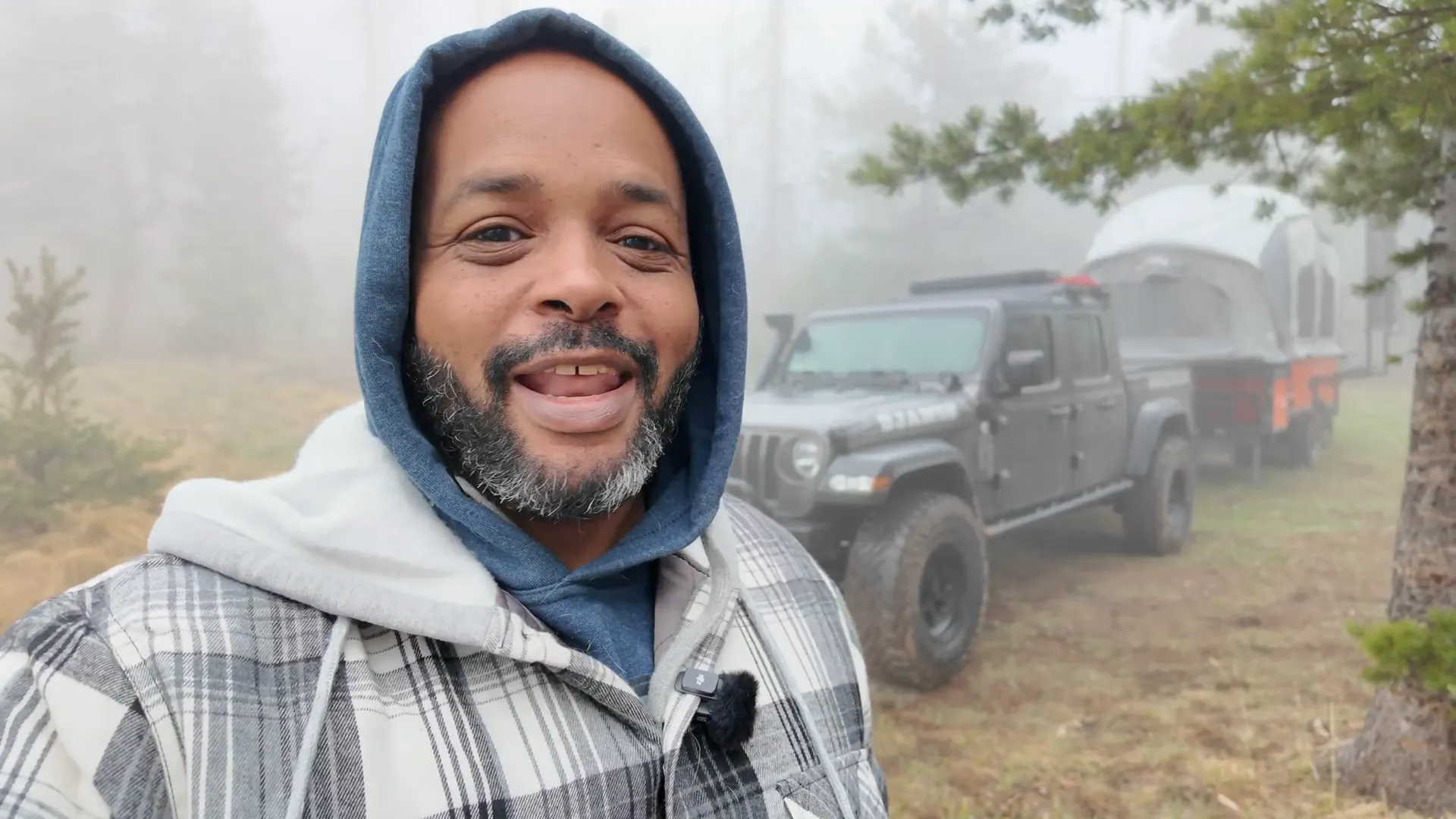
Table of Contents
- Getting to San Isabel National Forest
- Day 1: Arrival and Setting Up Base Camp
- Day 2: Weather Challenges and Cabin Fever
- Exploring the Trails: Holt Mountain, Lock Mountain, and Adobe Peak
- Day 3: Breaking Through the Fog and Weather Reflections
- Discovering the Best Campsite: Adobe Peak Area
- Wrapping Up the Adventure
- Essential Tips for Overlanding in San Isabel National Forest
- Frequently Asked Questions (FAQ)
- Conclusion
Getting to San Isabel National Forest
Located just about two and a half hours from my home, San Isabel National Forest is conveniently accessible for a long weekend or an extended trip. This proximity makes it an ideal destination for overlanders and campers who want to escape the Front Range’s hustle without venturing too far. The forest itself spans a vast area with numerous trails and dispersed campsites, so there’s plenty to explore for all levels of off-road enthusiasts.
My plan was to spend four days here, exploring different trails and camping spots. Having visited the area near Hermit Pass the year before, I was eager to check out more of the surrounding terrain and discover new sites. If you want a glimpse of Hermit Pass, I highly recommend checking out that adventure as well.
Day 1: Arrival and Setting Up Base Camp
Upon arrival, the morning greeted me with clear blue skies and just a few clouds. It was an inviting start, but by midday, fog and mist rolled in, blanketing the forest in a damp chill. This kind of weather can be typical in mountainous regions, and while it limited visibility and drone footage, it added a mystical quality to the surroundings.
I set up camp on the Holt Mountain Trail, a quiet spot slightly off the main trail. It was peaceful and away from the occasional side-by-side vehicles that passed by. The campsite itself showed signs of being a popular hunting spot during the season, with scattered animal bones and a log hung between two trees—likely used for processing game. It was a reminder of the forest’s wild character and the diverse activities it supports.
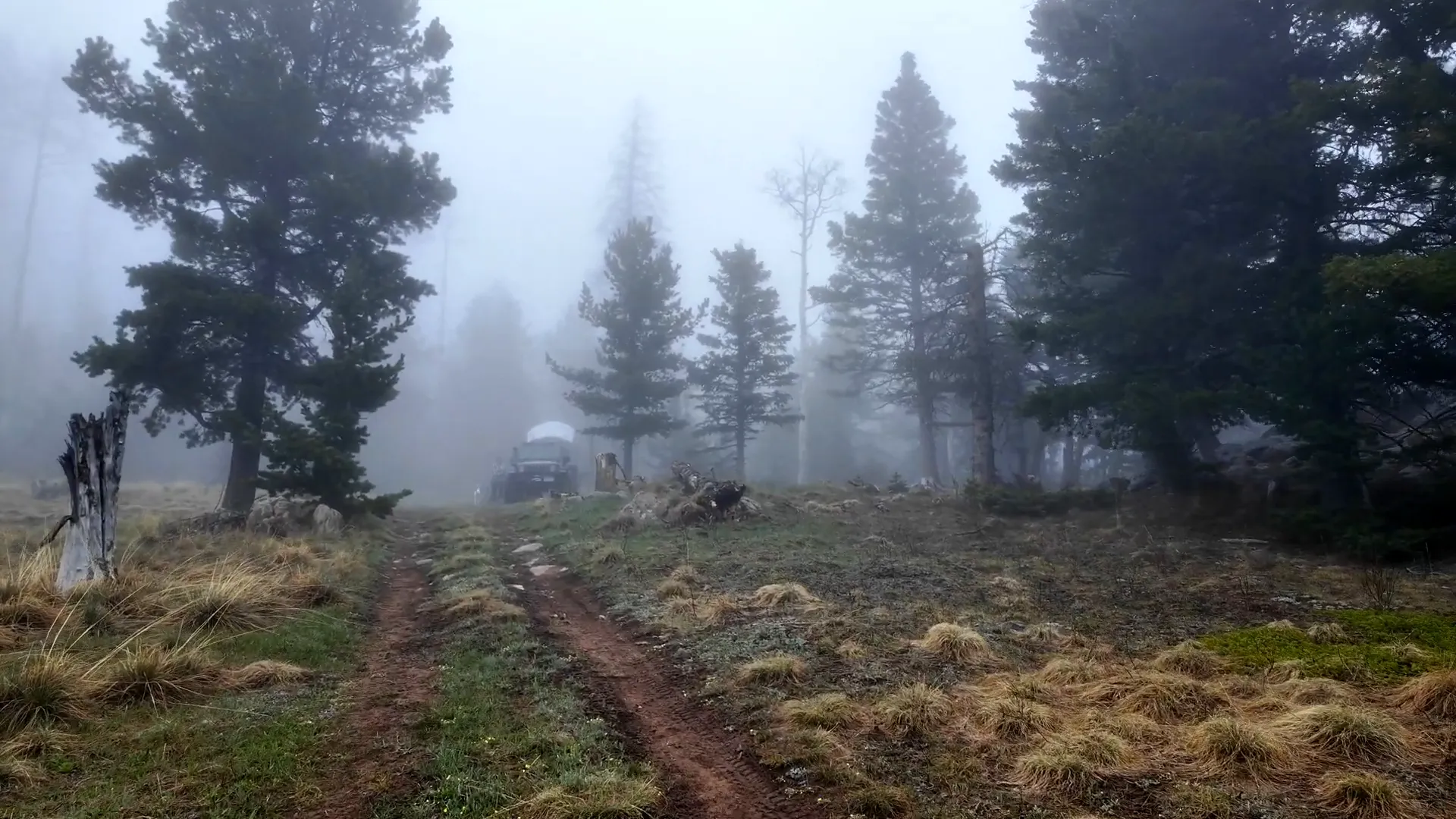
While the fog never fully lifted that first day, the solitude and fresh air made it worthwhile. It was a chance to unwind and soak in nature’s calm, even if the sun remained hidden behind the clouds.
Day 2: Weather Challenges and Cabin Fever
The second day brought more of the same foggy, misty conditions. With two adults, two kids, and two dogs all confined to the OP Four camper, the limited space started testing everyone’s patience. Although the camper is relatively spacious for its size, spending 24 hours inside with a full crew meant we had to get creative to pass the time. Card games helped, but only so much.
Recognizing the need to get out and stretch our legs, we decided to hit the trails despite the weather. Initially, I wasn’t optimistic about the views or drone footage due to the persistent fog, but once I reviewed the video, I appreciated how the mist lent an almost mystical, ethereal quality to the scenes. Sometimes, nature’s moodiness adds a unique charm that bright sunshine can’t replicate.

Exploring the Trails: Holt Mountain, Lock Mountain, and Adobe Peak
Our main objective for the trip was to explore three key trails in the area:
- Holt Mountain Trail (Forest Service Road 315)
- Lock Mountain Trail (Forest Service Road 274)
- Adobe Peak Trail (Forest Service Road 336)
These trails form a “lollipop loop” with Holt Mountain and Adobe Peak creating the loop itself, connected by Lock Mountain. The loop offers several dispersed campsites scattered along the way, many with spectacular views of the Sangre de Cristo Mountains to the west.
When planning my trip, I identified two potential campsites near small ponds. Unfortunately, fallen dead trees blocked access to both sites, highlighting the need to carry more robust trail maintenance tools like a chainsaw rather than just a handsaw for emergencies.

Trail Conditions and Camping Spots
The trails themselves are relatively easy, with no major obstacles or shelf roads. However, some sections are narrow, which can be tricky when encountering other vehicles—especially when towing a camper like my OP Four. I often found myself hoping not to meet another vehicle head-on, as backing up on these tight trails can be challenging.
Most campsites are clustered near the western end of the loop where Holt Mountain and Adobe Peak meet. These sites are spacious enough to accommodate two vehicles comfortably. The best campsite, in my opinion, sits just off Adobe Peak. It offers a prime spot for camping with beautiful surroundings and easy access.

Day 3: Breaking Through the Fog and Weather Reflections
On the third day, as we descended the Adobe Peak Trail toward Lock Mountain, the fog began to clear, revealing blue skies for the first time in days. After being enveloped in clouds for so long, this change was a refreshing reminder of why I love exploring Colorado’s outdoors. The contrast between foggy mystery and clear sunshine truly showcases the dynamic climate of mountain environments.
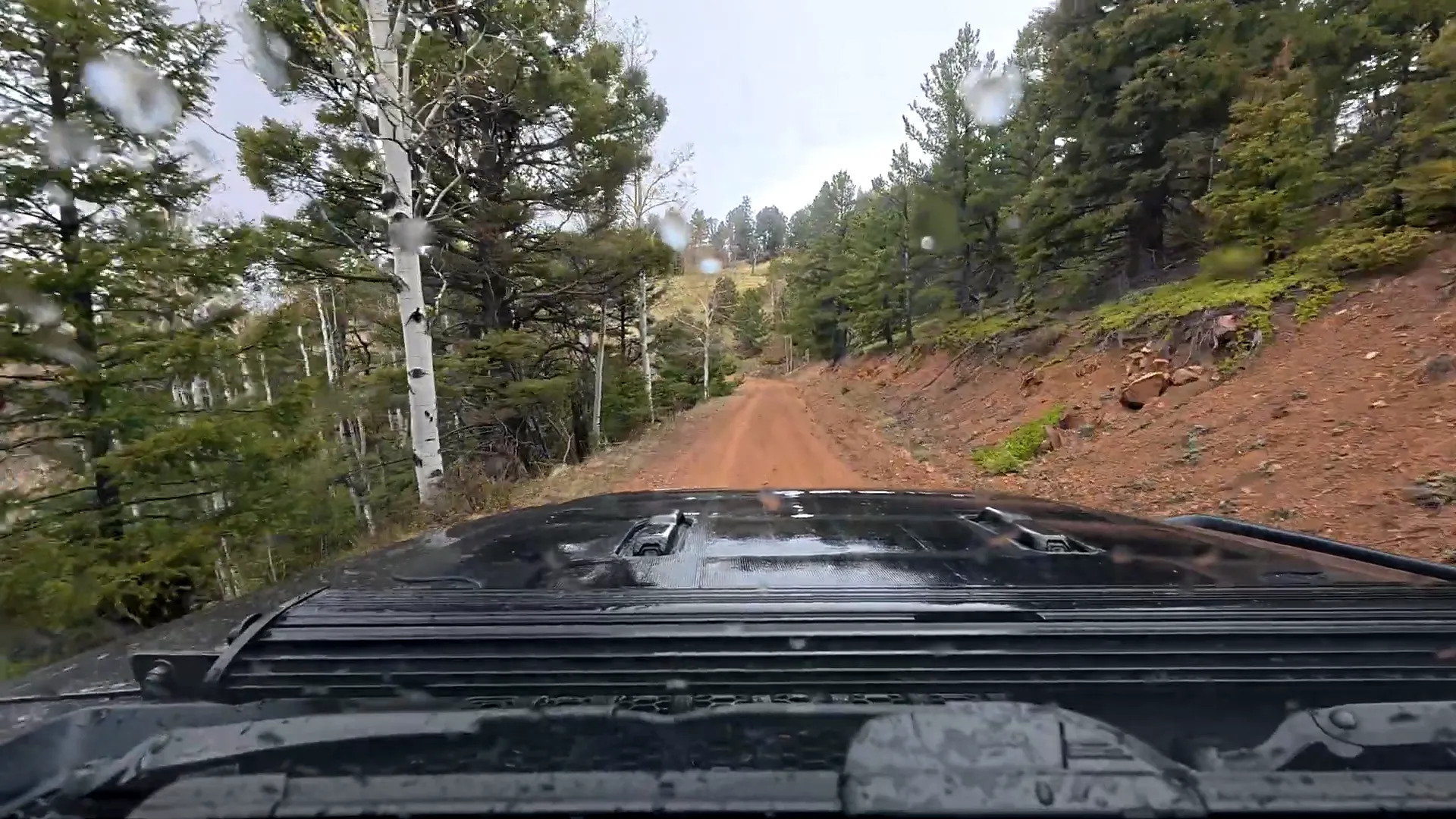
Having visited Seattle twice and fallen in love with its vibe, I had considered moving there. However, locals warned me that clear, sunny days are the exception rather than the rule—something I was now experiencing firsthand. After days of constant wetness and overcast skies, I questioned whether I was cut out for the Pacific Northwest lifestyle. Colorado’s unpredictable weather is part of its charm, but it’s also a test of patience and adaptability for overlanders.
Lock Mountain Trail and Weather Challenges
The Lock Mountain Trail promised amazing views of the Sangre de Cristo Range from its peak. Despite the lingering clouds and fog, we decided to give it a try. Along the trail, there is a decent campsite on a spur, which could be a great option for future trips.
As we climbed higher, we experienced a full spectrum of weather — rain, snow, sun, thunder, and lightning flashes in the distance. When we reached about halfway up to Lock Peak, we made the call to turn back. The thick clouds obscured any potential views, and with thunder rumbling nearby, safety was paramount.

While it was disappointing not to reach the summit, I don’t regret exploring this portion of the forest. We marked several excellent campsites along the way, and the diverse weather added to the adventure’s story.
Discovering the Best Campsite: Adobe Peak Area
Back on the Adobe Peak Trail, I wanted to showcase the best campsite in the area. To reach it, turn left at Forest Service Road 336A. This site is a gem—spacious, scenic, and peaceful. I initially drove past it aiming for a spot near a pond, but fallen trees blocked access to the pond, and the narrow trail made turning around difficult. After completing the loop, I returned to this campsite and immediately realized it was the better choice.
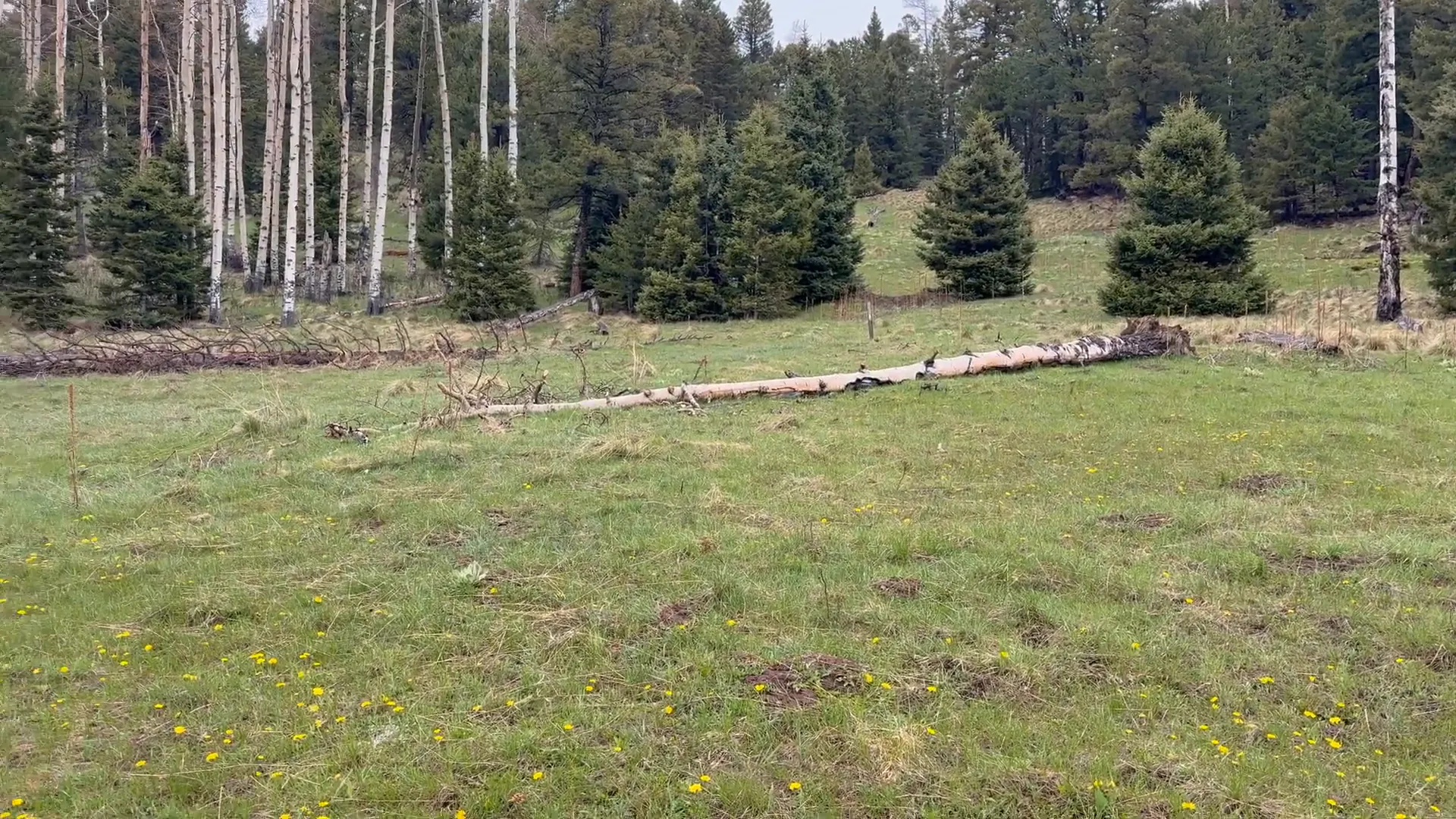
Nearby, we even spotted wild turkeys roaming the grass, and my daughter had fun trying to communicate with them—a charming moment that added to the trip’s memories.
The Importance of Trail Maintenance
One interesting discovery was a recently chainsawed fallen tree blocking one of the trails we had planned to use for camping. Someone had cleared the path and likely stayed there over the weekend. While this opened up a previously inaccessible site, the narrow trail meant anyone arriving would dead-end right into the camp, with no easy place to turn around except through the tent area. This highlights the importance of trail maintenance and the challenges of dispersed camping in remote areas.
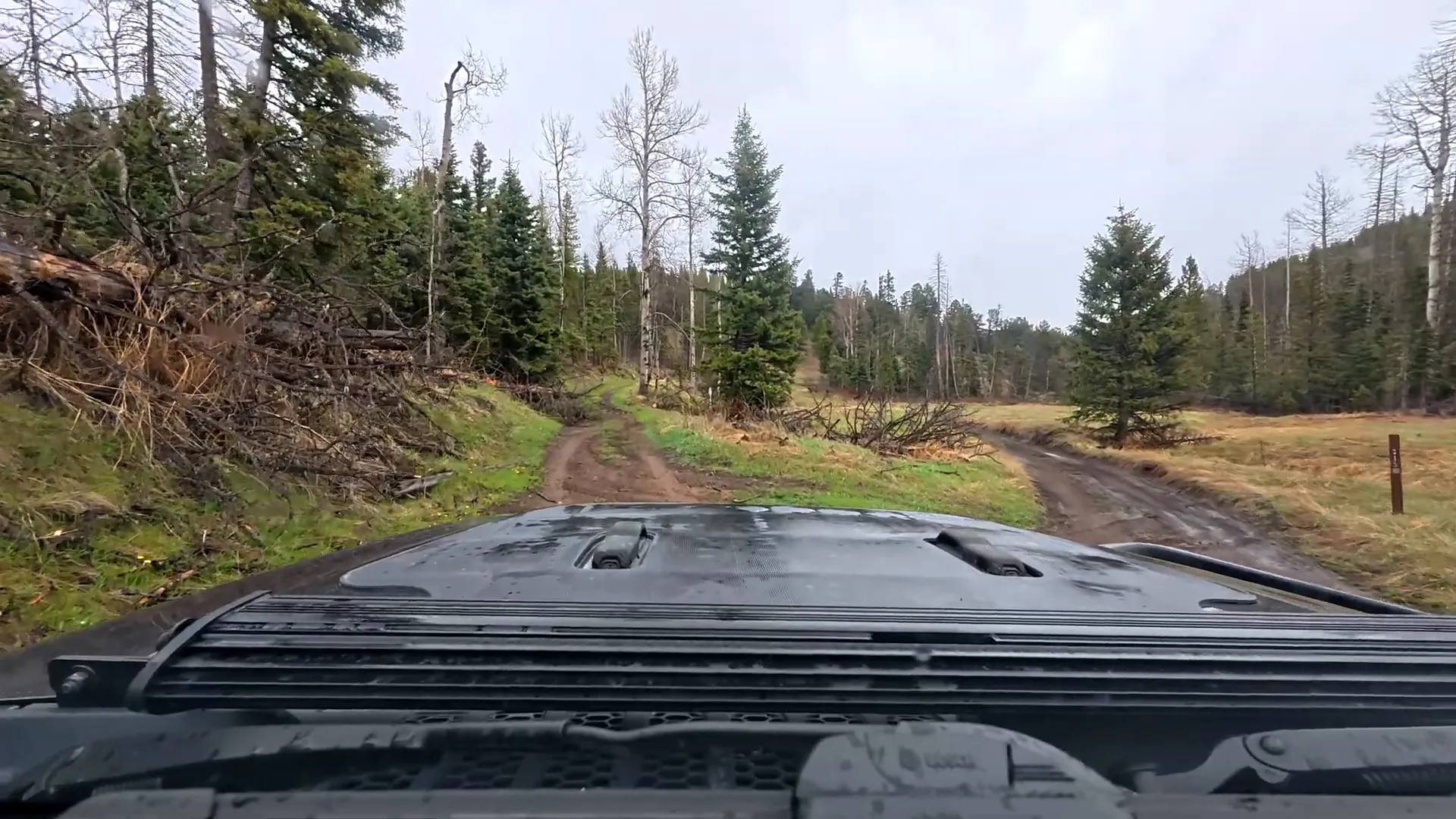
Wrapping Up the Adventure
As we returned to our campsite, the clouds finally cleared, allowing me to launch my drone and capture some stunning aerial views. Although the mountains to the north remained partially shrouded, the clearing sky was a beautiful end to our trip. The little daylight we enjoyed was precious, and the entire experience reinforced why I love overlanding Colorado so much.
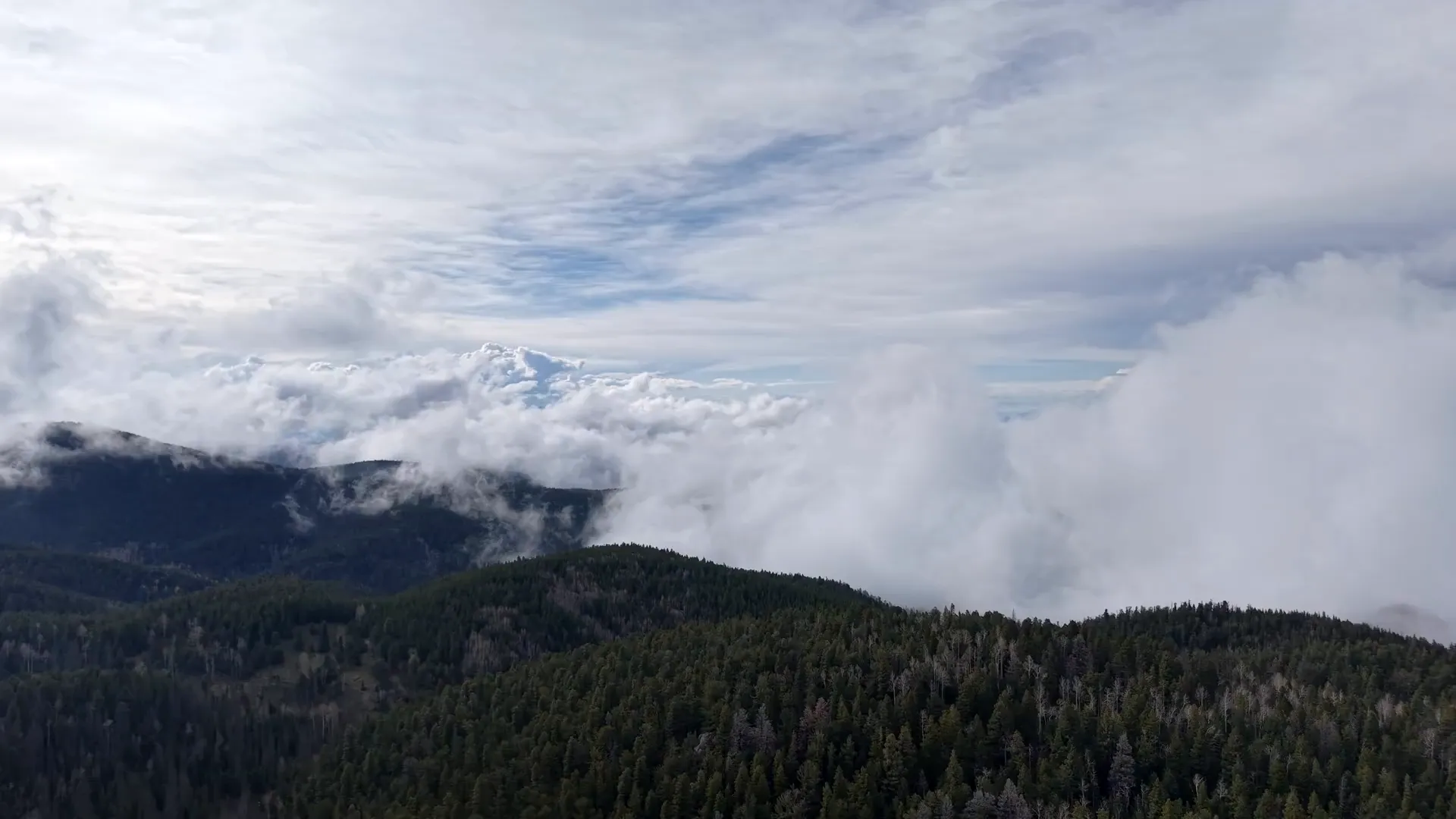
While this area of San Isabel National Forest is breathtaking, it’s just one of many incredible overlanding destinations in Colorado. If you’re eager to explore more trails and campsites, there are plenty of options to satisfy your adventure cravings.
Essential Tips for Overlanding in San Isabel National Forest
- Prepare for variable weather: Mountain weather can change rapidly. Pack for rain, sun, and cold temperatures.
- Carry proper tools: A handsaw is useful, but a chainsaw can be a game-changer for clearing fallen trees and obstacles.
- Plan your campsites: Use maps and resources to identify dispersed camping spots ahead of time.
- Be cautious on narrow trails: Some sections require patience and skill when encountering other vehicles, especially when towing campers.
- Respect the environment: Practice Leave No Trace principles and be mindful of hunting seasons and wildlife.
Frequently Asked Questions (FAQ)
What is the best time to visit San Isabel National Forest for overlanding?
Late spring through early fall is ideal for overlanding, as trails are generally accessible and weather is milder. Memorial Day weekend is a popular time, but be prepared for variable weather conditions including fog, rain, and occasional snow at higher elevations.
Are the trails in San Isabel National Forest suitable for beginners?
Yes, many trails such as Holt Mountain, Adobe Peak, and Lock Mountain are considered easy with no major obstacles. However, some narrow sections require cautious driving, especially if towing a camper. Always assess your vehicle and skill level before heading out.
Can I camp anywhere in San Isabel National Forest?
Dispersed camping is allowed in many areas of the forest, but some sections are unsuitable due to terrain or environmental sensitivity. It’s best to research and select established dispersed campsites to minimize impact and ensure safety.
What wildlife might I encounter?
The forest is home to various wildlife including deer, elk, wild turkeys, and smaller mammals. Hunters frequent some areas during the season, so be aware and respectful of hunting activities.
Do I need any special permits for camping or overlanding in San Isabel National Forest?
Generally, no special permits are required for dispersed camping or driving on designated forest roads. However, always check current regulations and restrictions, especially during hunting season or fire bans.
Conclusion
Overlanding Colorado’s San Isabel National Forest offers an unforgettable blend of adventure, nature, and solitude. From navigating the peaceful trails of Holt Mountain and Adobe Peak to experiencing the unpredictable mountain weather firsthand, this trip was a true test of patience and appreciation for the outdoors. Whether you’re a seasoned overlander or just starting out, this hidden gem has something for everyone.
Remember to prepare adequately, respect the environment, and embrace the unexpected moments that make overlanding such a unique and rewarding experience. I hope this detailed look into my journey inspires you to explore the roads less traveled in Colorado and create your own stories in the wild.
